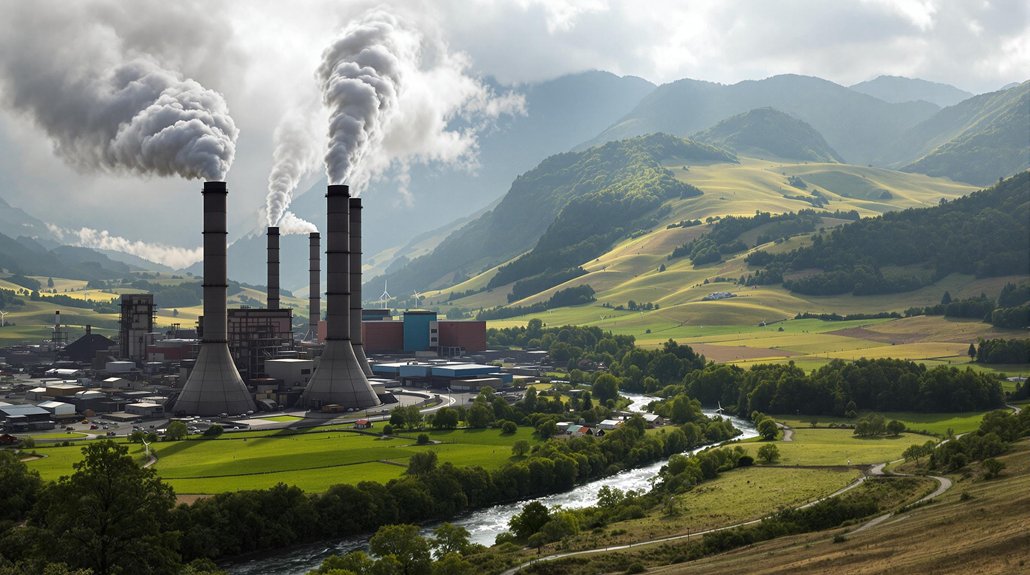Bosnia and Herzegovina remains stubbornly tethered to coal, which generates 60% of its electricity. Amazingly, wind and solar contribute a measly 6% despite the country’s estimated 2000 MW of untapped wind capacity. Political complexity and weak infrastructure block progress. The first wind farm only started in 2018—talk about dragging your feet! Plans for 43.6% renewable energy by 2030 exist, but coal’s artificially cheap prices complicate the shift. The full green potential waits beneath bureaucratic layers.
While most of Europe races toward renewable energy, the Federation of Bosnia and Herzegovina remains stubbornly tethered to its coal addiction. The numbers don’t lie – a whopping 60% of electricity comes from coal, with lignite power plants churning out 2065 megawatts of electricity.
Meanwhile, coal provides over half of the country’s total energy supply. Seems like someone forgot to tell BiH that it’s 2024, not 1924.
The irony? This coal-obsessed region is sitting on a gold mine of green energy potential. We’re talking 2000 MW of untapped wind capacity, abundant solar resources, and biomass potential that’s practically begging to be utilized. In fact, the country has determined that biomass resources are the most abundant renewable energy option available for development.
Bosnia’s green energy goldmine sits untouched while coal reigns supreme in a tragic case of wasted potential.
Yet somehow, wind and solar contribute a measly 6% to the energy mix. The first wind farm didn’t even start spinning until 2018. Talk about fashionably late to the renewable party.
Natural gas isn’t faring much better. With zero domestic extraction capabilities, BiH is entirely dependent on imports through a single pipeline – a precarious situation at best.
Gas usage remains below 3% of total energy supply, mainly heating homes in Sarajevo. No wonder they’re struggling to break their coal habit.
Progress exists, but it’s moving at a glacial pace. The 30 MW Petnjik solar plant and 84 MW Ivovik wind farm represent baby steps in the right direction.
New renewable energy laws passed in recent years offer a glimmer of hope. Small victories in a very large battle.
What’s holding BiH back? Political complexity, for starters. Try implementing national energy policy when your country’s governance is fractured.
Add insufficient grid infrastructure, limited financing, and no clear coal phase-out strategy, and you’ve got a perfect storm of energy stagnation.
The future isn’t entirely bleak. A draft National Energy Climate Plan aims for 43.6% renewable energy by 2030, with auctions planned for 240 MW of wind and solar projects. The electricity market is further hindered by artificially low prices that discourage energy-saving initiatives.
Pivoting to renewable energy would not only address environmental concerns but also create a boom in jobs through new green energy investments across the country.
But until BiH addresses its fundamental challenges, those aging coal plants will keep belching smoke into the Balkan skies.








